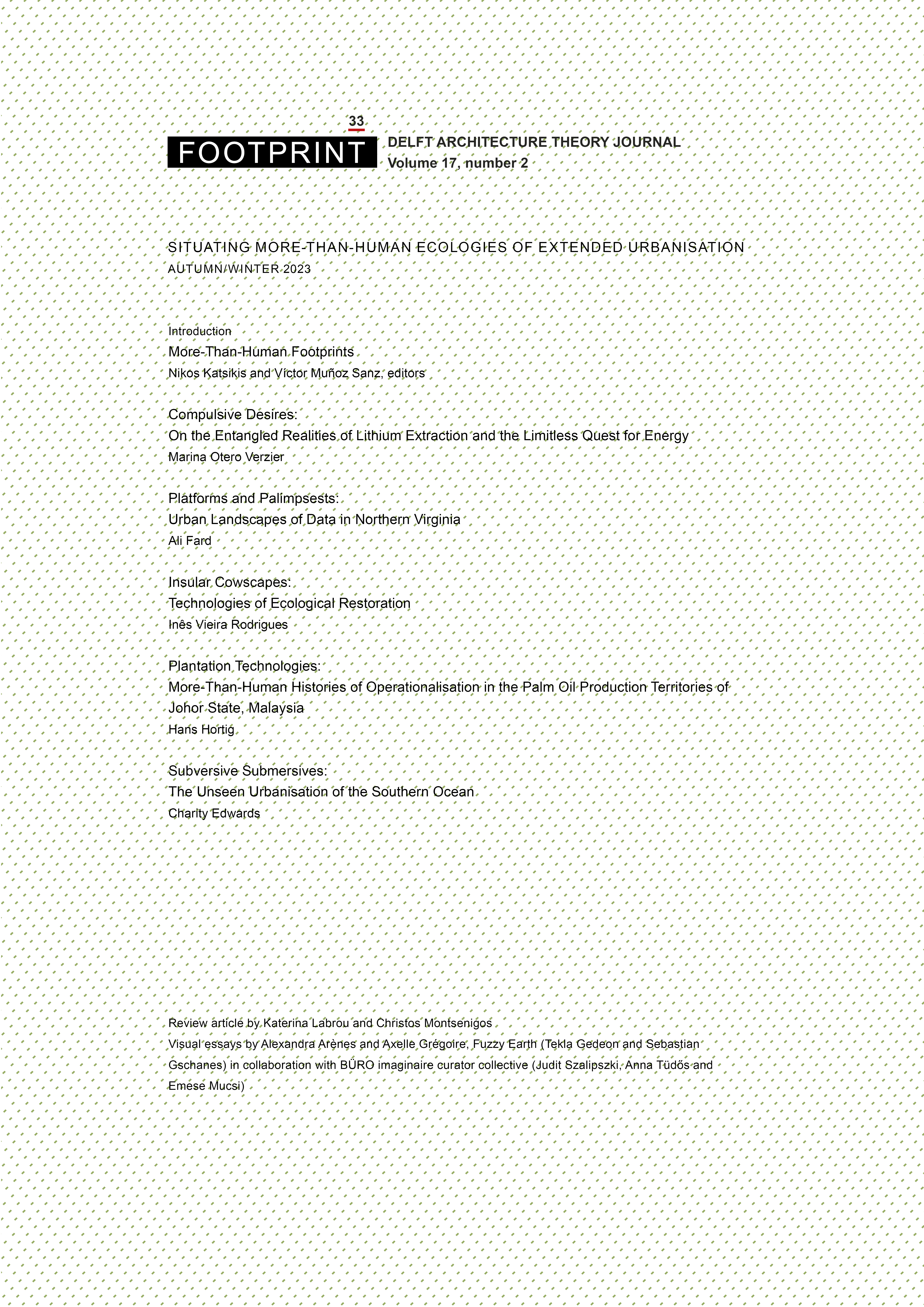Walk Under the Midnight Sun
Mapping Capsicum Ecologies
DOI:
https://doi.org/10.59490/footprint.17.2.7086Abstract
Walk Under the Midnight Sun is a large-scale carpet installation originally designed for the Hungarian Pavilion of the 2023 Venetian Architecture Biennale, part of an exhibition proposal by Fuzzy Earth design studio and BÜRO imaginaire curator collective. The project invites the public to explore the entangled historical, social and architectural relationships within greenhouse cultivation practices. The protagonist of the installation is a regionally unique capsicum cultivar, the Hungarian wax pepper, known in Hungary as the Cecei paprika. The themes of the exhibition were inspired by Fuzzy Earth’s ‘Not Quite a California Wonder’ research project.
References
Augé, Marc. Non-places: Introduction to an Anthropology of Supermodernity. London: Verso, 1992.
Downloads
Published
Issue
Section
License
Copyright (c) 2024 Gréta Tekla Gedeon, Sebastian Gschanes

This work is licensed under a Creative Commons Attribution 4.0 International License.
- Authors retain copyright and grant the journal right of first publication with the work simultaneously licensed under a Creative Commons Attribution License that allows others to share the work with an acknowledgement of the work's authorship and initial publication in this journal.
- Authors are able to enter into separate, additional contractual arrangements for the non-exclusive distribution of the journal's published version of the work (e.g., post it to an institutional repository or publish it in a book), with an acknowledgement of its initial publication in this journal.





